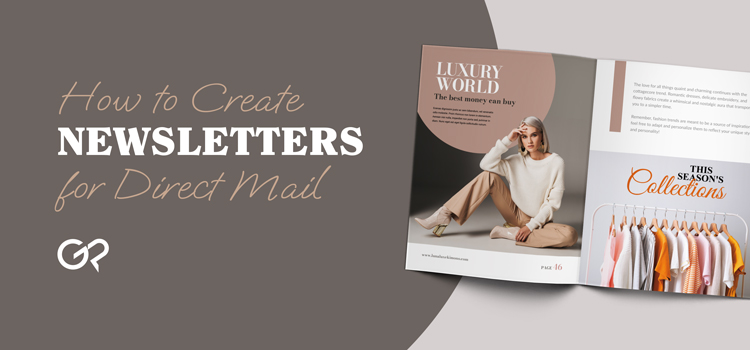Company-printed newsletters, commonly referred to in the printing industry as booklets or catalogs, are a vital way of distributing information to your established customers and clients. While promotions or ad campaigns can bring in a new audience, multi-page bound newsletters excel at keeping your current fanbase or buyers informed about what you’re doing, how best they can interact with your brand or business now, and what exciting products or announcements you have planned for the future. Most of us are familiar with digital E-Newsletters, but it’s important to remember that they started out as printed booklets, and are still quite effective when developed carefully and mailed out intentionally.
When it comes to both design and content for newsletters, there is a greater range of freedom and creativity at your disposal. You can put a spotlight on more of your company or more of your products with ease. Depending on your newsletter’s intended theme and audience, you can be quite inventive with the style, color, and even the material you decide to write about. All you need to guarantee is that your content supports your brand, reinforces your product or service, and catches the eyes of your reader.
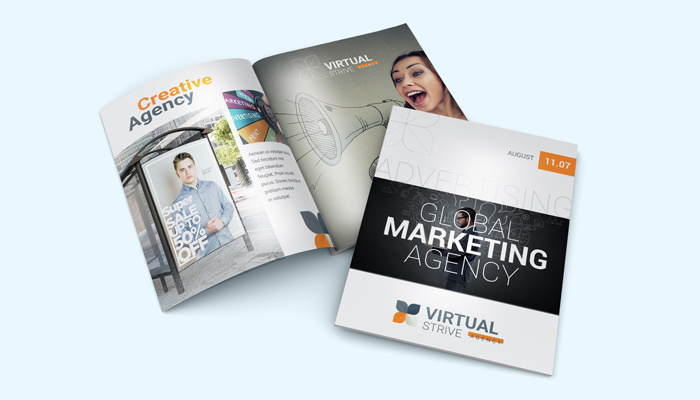
Newsletters: Digital vs. Print?
So in the modern age, what are the pros and cons of physical printed newsletter catalogs over the digital option? Obviously, there is an immediacy and convenience that digital products can provide that printed materials simply cannot compete with. But that doesn’t tell the whole story. Consider that because so many newsletters have moved to the digital space through email or a website, the e-newsletter scene is now oversaturated and your publication is likely to get lost in the shuffle of other emails. It is important to claim your reader’s dedicated time, and a catalog from your company in their actual hands is always going to be better than hoping they read through the entirety of your email.
This doesn’t mean that you should abandon email newsletters, just as the ease of digital options doesn’t mean you should abandon print options either. The best practice today is to develop newsletters that can be sent across both platforms.
- Physical Print: Get the information directly into your customer’s hands in-store or pinpoint specific ZIP codes or addresses for delivery. Help build rapport and a relationship with your business’s brand.
- Digital E-Mail: Conveniently send your information out to every customer that may be interested in an instant. While easier to ignore, digital prints are consistent, simple, and always effective.
By distributing to two widely but different audiences, you will be able to get both the best out of your print options and the best out of digital campaigns without having to deal with their downsides. While this can be a bit more of a financial investment, we promise you’ll reap rewards quickly with this strategy.
If you have a website, you can host your entire newsletter there and direct users to the site to read more while retaining your email as a shortened version. This is a great way to also bridge the gap between print or email content and your website, converting customers and clicks on your site into actionable success.
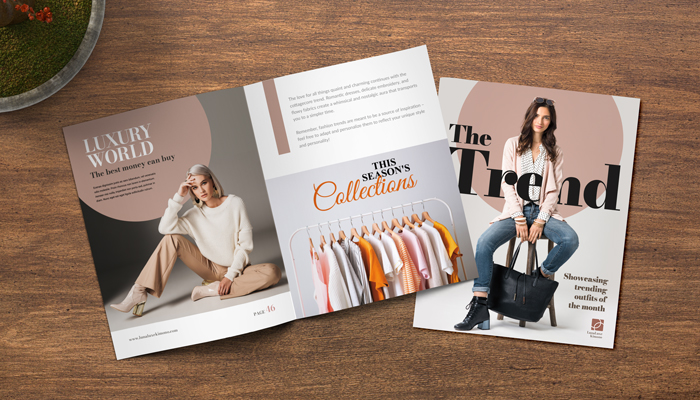
Tips for Starting Your Own Newsletter
The next question is what are you going to put in your newsletter? Newsletter catalogs can cover a wide variety of industries, and that means that no matter what you buy, sell, or whatever service you provide, there is thankfully a set of typical information you can count on being effective. If all this seems overwhelming don’t worry, our design and marketing team at GotPrint has put together this handy guide to walk you through your first few newsletters:
1. Types of Newsletter Content
Include exciting new announcements, new or trendy items, relevant blog or social media posts, customer profiles, and focused content to motivate readers to interact with your business or brand.
- Examples: New product launches, discontinued products, how-to guides like this one, or news within the business sector of your industry.
If you manage a hair salon, include new cutting-edge hairstyles or fun client spotlights. If you manage a grocery store you could highlight an easy dish using a popular ingredient found in your store. If you own a clothing store, some motivating content may include a fashion guide including clothes put together by some of your brand advocates. The point is you know your product or service better than anyone else, especially your customers. Promote what makes your business exciting within the world of your industry.
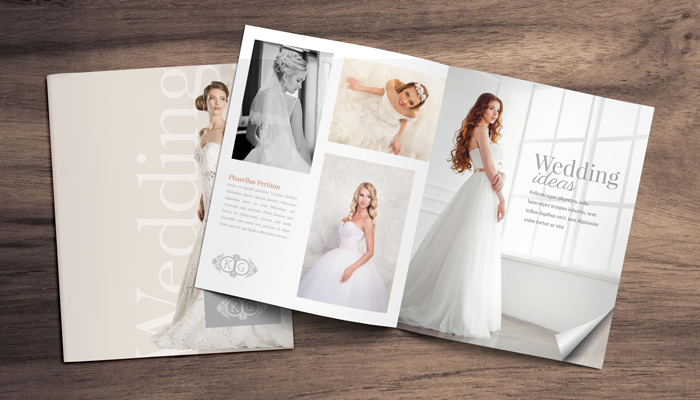
2. Guide to Newsletter Design
When designing your newsletter’s color scheme, your best practice is to include lots! Of course, keeping your design within reason will help create a more cohesive style. If you’re concerned or aren’t sure what colors to pick, we’ve also developed a wonderful guide to help you along the way here.
- Tip: Develop a Brand Style Guide for your newsletter, so whoever is developing your content stays with the parameters of your brand and identity. You will have an easier time coming up with the design plan for your newsletter if you follow a guide for fonts, color schemes, etc.
If you don’t already have an established style guide, now is the perfect moment to create one. This can include deciding specific words or verbiage you always want to include or avoid when discussing your company, long-term goals that your marketing copy will always be pushing toward, or just general Do’s and Don’ts for your business that will keep your company’s advertising clean and consistent. Use your newsletter to finalize the appearance, tone, and feel of your organization and brand.
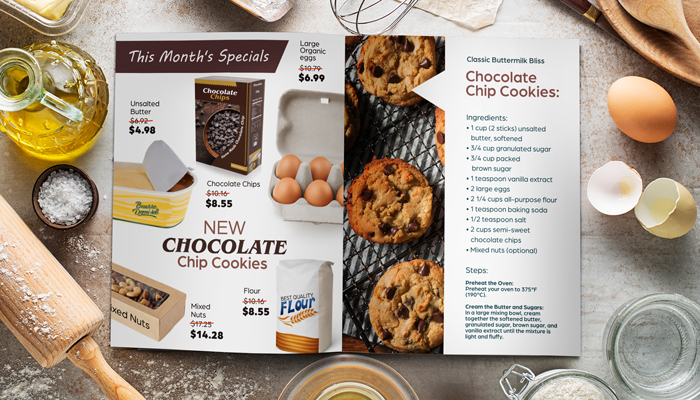
3. Simplicity is Your Friend
Keeping the information short and sweet is crucial when developing an effective newsletter. Informing your customers is always going to be the goal of the content you send out, but it is still important to make sure you don’t overwhelm your readers.
- Tip: It is best practice to keep your printed newsletters to a limit of no more than 8-16 pages. If you are developing a product catalog, you can increase this volume so long as your catalog is designed simply and easy to read. As a note, email newsletters should be even more concise, keeping to 3-6 pages at most.
A creative and well-designed catalog can be an extremely effective marketing tool. Whether you are looking to distribute a compact booklet to promote your best-selling items or services, a seasonal catalog for special interests, or a consistently published corporate magazine for news and announcements, a printed and mailed newsletter is going to always be the most direct option.
At GotPrint, we have also developed an easy file-upload system so you can get started right away! Your next step will be to simply upload your print-ready file to preview your newsletter booklet design online. Our product page also lays out the specific requirements of your image file, so be sure to give that a read-through and also look at the blog hyperlinked above while laying out your art.

Before we leave you to dive into your design options though, we need to go over your paper printing options. All the creative and personalized efforts in the world will be undercut if you don’t pick the paper that is right for you and your business.
What Are My Printing Options?
Rather than settling for more typical newspaper options, GotPrint offers a selection of premium and unique paper options that are sure to make your newsletter stand out from the rest of your industry. These include:
- 80 lb. Gloss Book: This paper stock shares the same characteristics as a catalog’s soft cover. Glossy and damage-resistant, with a smooth finish.
- 70 lb. Opaque Smooth White: Compatible with laser and inkjet printing, this option is bright white and uncoated, close to regular paper but slightly more durable.
- 80 lb. Gloss Book: Perfect for bright or vibrant colors, this paper is lightweight yet durable.
- 80 lb. Matte Text: This option will shine crisp and white with a matte finish.
After selecting your paper type, you will also need to choose a cover option for your newsletter. This paper stock is typically thicker and more resistant, as it will protect the rest of your newsletter from wear and tear:
- Self-Cover: The cover of your newsletter will be the same as the paper you select for your pages.
- 100 lb. Gloss Cover: Flexible, sturdy, and performs well with vibrant colors
- 14 pt. Gloss Cover: You will recognize this paper stock as the kind commonly used for most business cards. With an added high gloss UV coating, this stock boasts shine and damage protection.
- 14 pt. Uncoated Cover: Same thickness as the above gloss cover, except the finish is uncoated.
- 100 lb. Matte Cover: Our thicker options will shine white with a matte finish. Pairs well with 80 lb. Matte Text.
Bound booklets and catalogs are a fantastic way to create newsletters and disseminate information while entertaining your customers at the same time. While the initial design and content work can seem like a lot, once you get everything set up the content begins to write itself. From that point on it becomes easy to keep clients up to date, announce new exciting projects, and drip feed information about your industry you wish everyone knew.
